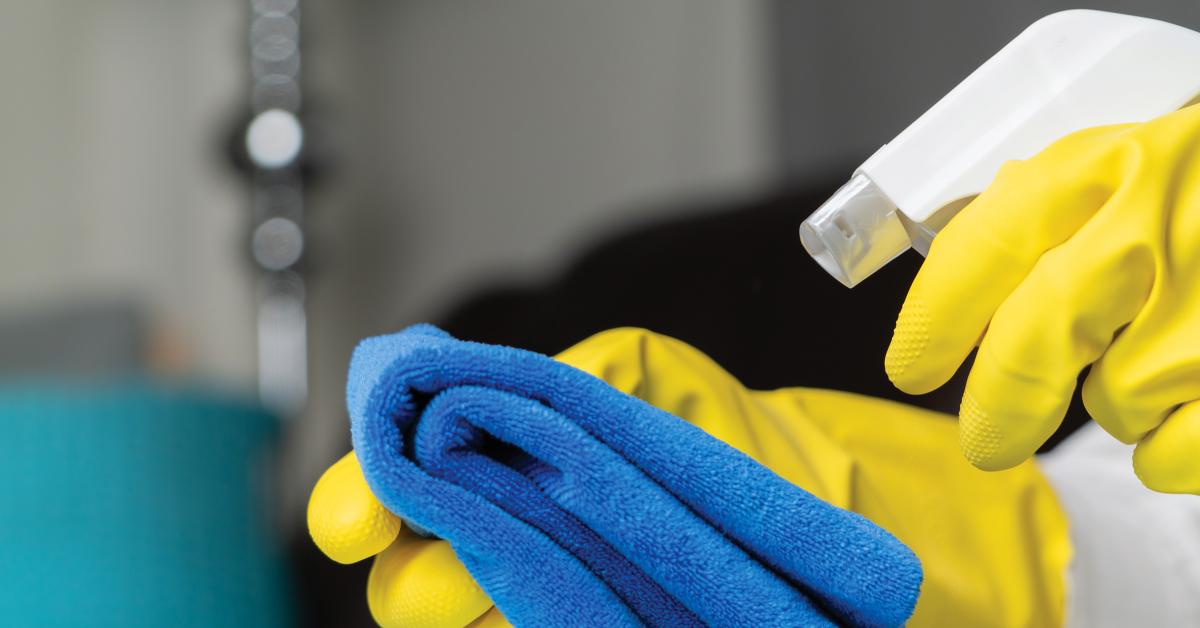RIPON, Wis. — When you think of public safety, you usually think of police officers, firefighters and healthcare workers. After all, those workers keep you and others safe from things such as burglars and violence, fires and chemical spills, and disease and other traumatic injuries.
But in the aftermath of a pandemic caused by a novel strain of a coronavirus, you might want to add laundry workers to that list.
It was just December 2019 when a new virus was detected in Wuhan, China. But since then, COVID-19 has spread rapidly, infecting more than 8 million people worldwide, including over 2 million in the United States, and killing 437,000-plus, including more than 118,000 in the United States alone.
OPL SAFETY IS NOT NEW
Long before anyone had ever heard of the coronavirus, on-premises laundry (OPL) safety had always been a priority. Keeping your laundry equipment clean and well maintained, and making sure your employees know how to correctly use the equipment, should always be a priority.
That includes properly loading the washing machine, confirming the right amount of chemicals are being automatically injected into the washer and ensuring that there are no chemical leaks. Don’t be afraid to rely on your chemical representative for help or to answer your questions and ensure that you are using the correct amount of chemicals in your specific equipment.
Environmental Protection Agency (EPA) guidelines note that although contaminated fabrics, particularly in healthcare facilities, can be a source of microorganisms, reports of diseases linked to contaminated fabrics are so few that the overall risk of disease transmission during the laundry process is negligible.
But the Centers for Disease Control and Prevention (CDC) suggest guidelines based on common sense and principles of hygiene. These include:
- Avoiding cross contamination by using color-coded carts designated for either clean or soiled linens.
- Minimizing the spread of bacteria during transport.
- Having hand-washing stations readily available.
- Wearing appropriate PPE when handling soiled fabrics.
- Minimizing contamination by partitioning your on-premises laundry room.
- Using hot water (temperature of at least 160 F for a minimum of 25 minutes) while doing laundry to minimize bacteria and ensuring the correct tumbler heat temperature.
- Labeling chemicals and soaps to prevent injury.
ADDITIONAL STEPS IN A COVID-19 WORLD
With COVID-19, however, safety measures need to be expanded for your onsite laundry. Although there are no federal regulations in place, but rather recommendations, you need to be careful, consistent and thorough in your plan and operation.
According to the CDC, general contaminated clothing should not be shaken, but instead specially handled and laundered using the warmest possible wash temperature. It is generally advisable to use a standard laundering sanitizer additive in washing clothing. We also recommend a high temperature on the tumbler when possible and running a sanitize cycle in between wash loads.
One of the easiest and most important things you can do is to properly wipe down the handles and other contact points of washing machines and dryers; that’s especially important if you have multiple people operating your equipment. Be sure you use EPA-recommended disinfectants for cleaning to help reduce the risk of transmission and exposure, and always wear gloves appropriate for the chemicals being used for cleaning and disinfecting.
If you’re unsure if your disinfectant is recommended by the EPA, go to https://www.epa.gov/pesticide-registration/list-n-disinfectants-use-against-sars-cov-2.
In addition, make sure your employees have access to soap and water, or alcohol-based hand sanitizer (at least 60% alcohol), and that they wash their hands frequently.
Practice social distancing and leave 6 feet between employees. That may be easier in a limited service hotel that has only one full-time employee (FTE) doing the laundry. But in select service or luxury hotels, that will likely be more difficult, particularly as hospitality rates start to increase and people become more comfortable with traveling again, causing the need for more laundry to be done.
Moving forward, I would assume that many hospitality chains will start testing employees for COVID-19, if they do not do so already.
While there is still much to learn about the novel coronavirus, the CDC says the virus is most often spread from person to person. The CDC knows that transmission occurs via respiratory droplets, but it is still unknown how long the air inside a room occupied by someone with confirmed COVID-19 remains potentially infectious.
So if someone in your OPL facility is ill or suspected to be ill with COVID-19, it’s important that you take measures to improve ventilation in that space, and thus help shorten the time it takes for the droplets to be removed from the air.
The CDC also recommends employees wear face masks. You may also want to check with your local or state health department for their specific and up-to-date recommendations as conditions change rapidly and differ from state to state.
THE IMPORTANCE OF TECHNOLOGY
However, I believe it will become increasingly important for OPLs to prove that everything is being laundered properly. Thankfully, today’s equipment makes it easy to determine that.
Technology-based machines can give you data such as what your pH level is on each and every load, allowing you to prove that the finished laundered items are sanitary. I see that as a next step that hospitality partners will employ to ensure their loyal customers have peace of mind while staying at their properties.
For those working in onsite laundries in nursing homes and assisted living facilities, where many cases of the coronavirus have been diagnosed, attention to detail and cleanliness is more important than ever. In fact, the impact of COVID-19 on those facilities has been drastic.
That’s because people inside those facilities are most at risk for complications and death due to the coronavirus. Nationwide, 33% of coronavirus deaths, or at least 28,100, are nursing home residents and workers, The New York Times reported, adding that the virus had infected more than 153,000 at some 7,700 facilities by mid-May. Other news reports show even higher percentages, such as 40 to 80%, depending on region, according to data compiled by The Foundation for Research on Equal Opportunity.
While there are no mandates in place for proper laundry procedures in healthcare facilities due to COVID-19, it’s clear that you must take huge steps to make sure that everything is clean and sanitized.
Most nursing homes are on lockdown and allow only staff to come in, so it’s important that your machines are properly maintained and operating correctly with the proper amount of chemicals, that your employees are being tested, and that you are taking safety procedures to keep them—and the residents—safe.
To learn more about the CDC’s rules for cleaning and disinfecting community facilities, go to https://www.cdc.gov/coronavirus/2019-ncov/community/organizations/cleaning-disinfection.html.
Have a question or comment? E-mail our editor Matt Poe at [email protected].

